C.M. Rosens's Blog, page 13
November 9, 2024
Author Spotlight: A.K. Hauser
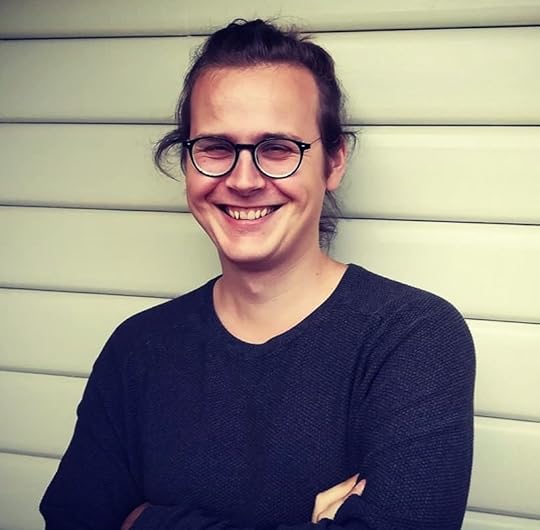
A.K. Hauser is a Danish author with German roots. After dropping out of high school at age seventeen to travel around Europe, he instantly fell in love with the backpacking life before settling down as a freelance translator upon his return to Denmark. He was diagnosed with Tourette’s as a child and later with Asperger’s and dysthymia, which have forced him to seek a lifestyle outside the norm in order to survive. It was when he picked up creative writing, however, that he started to thrive.
Author Links
Website: akhauser.com
Discord & Newsletter: https://akhauser.com/pages/community
Instagram: @authorakhauser
Facebook: /AuthorHauser
Add The Cradle of Oshae to Goodreads: https://www.goodreads.com/book/show/221067175-the-cradle-of-oshae?ac=1
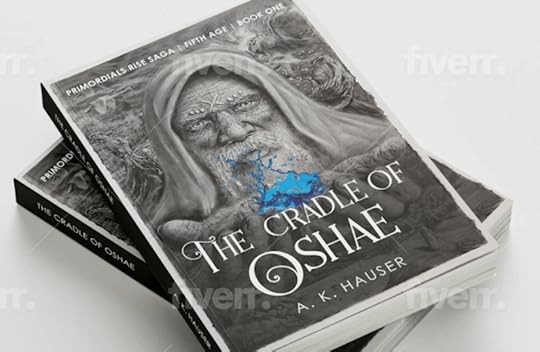
Your adult fantasy trilogy sounds epic, and the first novel has 9 POVs! How did you develop the characters’ voices to keep them sounding different, and which has been the most challenging to write?
It wasn’t easy, that’s for sure! And keeping them unique but still readable has definitely been a balancing act. Some of the characters’ voices were pretty much there right away, while others (like Moz, who was by far the hardest to nail down) have had many reworks throughout the editing process.
When I write, I try to keep in mind where the character is from, how old they are, who they are on the inside, how they want to come across on the outside, and where they are in their journey.
For instance, Fike and Paeon are both from the Seaborn tribe, but one is an energetic 8-year-old girl while the other is a calmer, less excitable man in his early twenties. What they know about the world will be similar because of where they are from, but their ages and personalities make them perceive it in different ways, which comes across in things like their vocabulary, their tone, and what they notice around them vs what they don’t.
And the book also takes place across a journey where characters meet other cultures they’ve never encountered before (and experience things they’ve never experienced), which will alter their voices to some extend – again depending on their age and personality. For instance, an 8-year-old girl is much quicker to adopt a new word or have her world view shaken than a 60-something-year-old Druid (looking at you, Eh’rru).
It’s difficult but it’s honestly one of the things I love most about writing! It feels a little like acting, just without the camera and lights 
You have multiple fantasy cultures represented in the novel, from Sandborn to Riverborn and Seaborn. What came first, the geography or the idea for these communities and cultures, and what was your worldbuilding process like?
Such an interesting question! I’m not sure if I can actually pinpoint one specific source or approach, because they all feed into each other, but generally speaking I think the characters come first, then the cultures, and then the geography.
But I think this example will underline why it’s all one chaotic mess of ideas, thoughts, and “what ifs”: In the case of Paeon and The Valley, I first wanted to write about a village on the coast (probably because I was living in a small coastal town at the time… very original!), and then I asked myself “what if there were no trees in this place? That would really suck” and “what if it was just nice and warm all the time? That would be really nice.” Then I slowly realized that this place was basically a desert (I thought of a North African climate) and then by one logic step figured out how they must survive in a place like that.
I then watched a short documentary about a Senegalese man harvesting salt from a pink lake, and the Seaborn village of Maroo immediately popped into my head, because “what if people built their houses with this pink salt? The village would just be pink!” (wow, amazing conclusion ) — but it was such a strong, beautiful image. And the struggles of that man’s life was such a stark contrast to that aesthetic beauty. His struggle became the struggle of Paeon’s mother, and Paeon’s struggle became the hardship of his mother’s life; of wanting to help her while not really being able to do so.
) — but it was such a strong, beautiful image. And the struggles of that man’s life was such a stark contrast to that aesthetic beauty. His struggle became the struggle of Paeon’s mother, and Paeon’s struggle became the hardship of his mother’s life; of wanting to help her while not really being able to do so.
There’s A LOT more to that specific conception of Paeon, Maroo, and The Valley, but I hope this was at least somewhat interesting even though my point was to show just how random the creation process can be.
What gave you the idea of intertwining 9 separate stories, and what was your outlining and drafting process like for keeping these narratives flowing?
This was by far the most chaotic part of my writing process. They were actually just the first 9 characters that I wrote — almost like character studies — but rather than discarding them if something didn’t work, I forced myself to just MAKE it work, which eventually lent itself well to this flow of one long narrative where more and more characters are added along the way. But it was hard to stop at 9; I wanted to keep adding more (especially on occasions when one POV got hard and it would be easier to just jump into a new one), so the process all in all was a lot like having a demon and an angel on my shoulders, one saying “do whatever you want” and the other saying “but take responsibility for the things that you do.”
Time will tell if I’ve succeeded, especially as I write books 2 and 3, and although there’s always room for improvement, I’m very happy with the way book 1 turned out in this regard!
A lot of your characters are looking for something, whether that’s adventure or revenge or the truth about themselves or the world around them; was this central thread of seeking or a sense of absence a core theme you intended to explore all along, or did this happen organically?
What an amazing question. Hmm. I think the seeking and sense of absence has always been my own core theme in life, so as a first-time writer, I did the thing where everything is basically built on something I know or can relate to. This happened at a subconscious level at first, but as I began editing the book, I of course became more aware of it and started to look at what I’d written almost like a mirror. I decided to celebrate that, though, because I think it’s something that can only happen once in an author career — that raw, unfiltered expression of ‘me’ — and as I refined the book I tried to make it less obvious, because in the end it is a story; it isn’t me, even though each character has a lot of me in them.
What is it about epic fantasy as a genre that helps you to explore these themes?
Freedom of expression and sense of setting, I’d say. In fantasy, I feel like anything can become anything. How I experience the fall of rain on a September morning can became an entire culture’s outlook on life or relationship with their God of Rain, for instance.
A specific philosophy about death can become a character’s body language or an elemental spirit that behaves or reacts in certain ways — and any little way of viewing the world can become exaggerated or distorted or tamed and put into contexts that feel more like dreams than reality, although, ironically, those fictitious dreams can often tell us (readers and writers) more about ourselves than a psychology class at school.
All of that coupled with the fact that I get to choose when and where it takes place just makes for the perfect tool for simultaneous escapism and self-exploration! I adore the pre-medieval settings, for instance, and I spend a great deal of time thinking about all that we do not know, like the lives of the Germanic tribes before the Romans wrote about them, or the entire Americas before everything got documented and interpreted through European minds.
What are your publishing plans for the trilogy, and can you tell us about the artists you’re collaborating with on this journey?
While I hope to not leave readers hanging for too long between now and book 2, I must also admit that I’m a very slow writer. I plan on updating those who are curious through Discord and newsletters, though! And indeed, I’m extremely honored to collaborate with 30 local artists who’ve all created works of art based on my book!
This idea began in January 2022, and we’ll finally be able to unveil what the artists have created this November, 2024. The book’s cover was created this way, because Liv Hentze, the artist who drew the cover, applied to join and just happened to be one of the most talented people with a pencil I’ve ever seen, and several other artists’ work have inspired me to change or underline certain aspects of the book (and future books) that I wouldn’t have otherwise thought of!
You can find the exhibition by Googling ‘Fantasy Art Exhibition – The Cradle of Oshae‘ or by visiting my website – akhauser.com – where art prints and leftover originals will also be available for purchase (or casual browsing) from mid November.
Preorder NowLike This? Try These!November 6, 2024
Author Spotlight: Victoria Audley

Victoria Audley is a folklorist, teacher, and ghost escaped from a gothic novel, currently haunting the coast of North East England. In her spare time, she enjoys knitting, baking, and playing too much D&D. When she grows up, she would like to haunt a seaside manor.
Author links: https://bio.link/vcaudley
[image error]Pexels.com","created_timestamp":"0","copyright":"","focal_length":"0","iso":"0","shutter_speed":"0","title":"hand holding a slice of watermelon with blue swimming pool water in the background","orientation":"0"}" data-image-title="pexels-photo-2403850" data-image-description="" data-image-caption="Photo by Elaine Bernadine Castro on Pexels.com
" data-medium-file="https://i0.wp.com/cmrosens.com/wp-con..." data-large-file="https://i0.wp.com/cmrosens.com/wp-con..." src="https://i0.wp.com/cmrosens.com/wp-con..." alt="hand holding a slice of watermelon with blue swimming pool water in the background" class="wp-image-12969" srcset="https://i0.wp.com/cmrosens.com/wp-con... 1024w, https://i0.wp.com/cmrosens.com/wp-con... 300w, https://i0.wp.com/cmrosens.com/wp-con... 768w, https://i0.wp.com/cmrosens.com/wp-con... 1536w, https://i0.wp.com/cmrosens.com/wp-con... 1200w, https://i0.wp.com/cmrosens.com/wp-con... 800w, https://i0.wp.com/cmrosens.com/wp-con... 600w, https://i0.wp.com/cmrosens.com/wp-con... 400w, https://i0.wp.com/cmrosens.com/wp-con... 200w, https://i0.wp.com/cmrosens.com/wp-con... 624w, https://i0.wp.com/cmrosens.com/wp-con... 1733w, https://i0.wp.com/cmrosens.com/wp-con... 1650w" sizes="(max-width: 825px) 100vw, 825px" />Photo by Elaine Bernadine Castro on Pexels.comOperation Olive Branch: https://linktr.ee/opolivebranch
GoFundMe’s Highlighted by Authors for Palestine Event: https://afp.ju.mp/#info
For the AfP event we have selected the following 3 families to help boost their fundraisers. The details below were taken from the OOB spreadsheet.
Mohammed’s fundraiser: GoFundMe
Mohammed’s Instagram: @mohammedalbaredei
Ibrahim’s fundraiser: GoFundMe
Ibrahim’s Instagram: @ibrahimwithi
Rula’s fundraiser: GoFundMe
Rula’s Instagram: @rula_mohammed
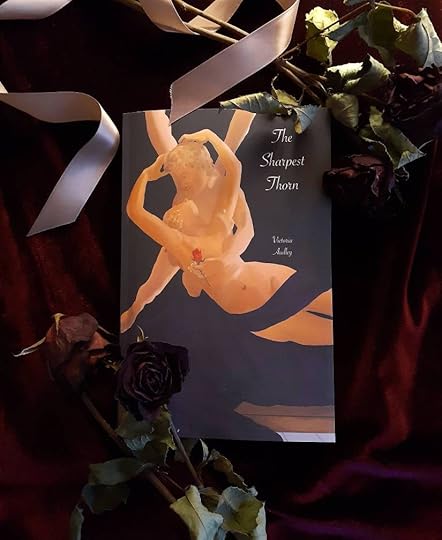
You were one of the authors involved with the Authors for Palestine event – can you tell us why you chose to get involved with this, and which of your works you put up as raffle prizes?
In any way I can, I want to use my art to do good in the world. Each of us has ways we can make the world a better place, skills we can use towards helping each other. There’s no such thing as useless talent – whatever you’ve got, there’s a way to use it for good. Especially in the face of great injustice, it’s easy to think there’s nothing you can do, but every small thing matters. If what you’ve got is spare money, that matters to Mohammed, Ibrahim, Rula, and their families. If my work can be a carrot on a stick that helps them, then that’s something I’m happy and proud to do. I put up all my published books up in one way or another for the raffle – a free copy of The Hunt and the Haunting and a discount code for everything else were participation gifts, and two copies of Crown of Ivy went out to bundle winners.
Do you find your sense of social justice and activism informs the philosophy of your writing, in terms of narrative and character arcs? If so, how?
It has to, I think. What you believe is revealed in your work even if unintentionally. I’ve always been really interested in what stories reveal about the author and their society, what they value and what their society values and whether those are supportive or opposed – it’s what drew me to study folklore: hundreds of versions of the same story from all over the world, with different focuses and cultural themes and commentaries woven into the poetry of them. I love people, I love our diversity and our eccentricities and our passions, I love all the ways we interpret ourselves and the world around us, and I believe everyone deserves the freedom and safety to live and thrive as their true selves. I think caring about those things shows in my work, certainly.
What drew you to the myth of Eros and Psyche for your latest book, The Sharpest Thorn?
I was re-watching one of my favourite films, Jean Cocteau’s La Belle et la Bête, and thinking about the references to Greek mythology in the film. I thought it was interesting, since the oldest recorded variant of the Beauty and the Beast story is the myth of Eros and Psyche, though that wasn’t the route the film took. I kept thinking how much I’d love a book that felt to me like that film feels, and as is so often the case, I had to write the book I wanted to see in the world. Eros and Psyche is one of my favourite myths – indeed, Beauty and the Beast is one of my favourite fairytales – so naturally it made sense to stick with that for this book.
The story takes place in an alternate, Gothic-flavoured Greece – how did you go about creating and developing this setting?
It’s again very much Jean Cocteau’s fault! Aesthetically, I wanted the story to reflect that gorgeous gothic fairytale setting. Gothic as a genre is just incredibly well-suited to Greek mythology: secrets in the walls, forbidden love, golden palaces in the sky built on a foundation of trauma, blood, and betrayal. This ended up being a story very focused on family and generational trauma, which is very central to both gothic and Greek mythology. I used a lot of the visuals of gothic to pathetic fallacy my way around Greece in this book, turning sun-drenched mountains sharp and cold, and warm seas dark and isolating.
What is your favourite part of the book (if you have one) and why? If you don’t, which bits were most enjoyable to write?
The chapters of Psyche alone after her betrayal were so much fun to write – a really golden opportunity to destroy the enchanted palace I’d built and leave her despairing in a gothic ruin. In the same stretch, my favourite part is when she finally gets shaken out of her stalking around in a haze of grief by Pan and the followers of Dionysus. Pan’s appearance in the myth is so small, and I really enjoyed taking the opportunity to flesh it out more and add in some more liveliness in opposition to Psyche’s dour mournful stage.
What three things do you want readers to take away from The Sharpest Thorn and why?
I always hesitate to prescribe what I want people to take away from my writing – I want to know what it sparks in you without any leading, what you got out of it and what about it speaks to you. But not to shirk the question: I hope it helps people who struggle with obligated feeling and not being able to feel the way it seems everyone else does. I spent a lot of time feeling broken, and I’m still not convinced I’m not, but at least I’m not alone in it. I hope people really think about what love means to them, and if the people in their lives show them that love. And simply put, I hope people enjoy it. If you don’t take any grand statement from it but you had a good time, that’s all I could ask for.
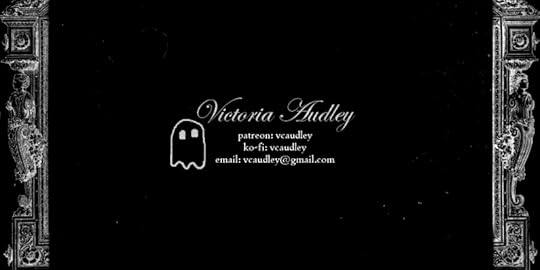 Like This? Try These:
Like This? Try These:AFP Author & Host – Shariva Khan
AFP Author – H.S Kallinger
AFP Author – Katy Haye
AFP Author – Shane Blackheart
AFP Author – Lillian Zenzi
October 30, 2024
Author Spotlight: Matt Corton
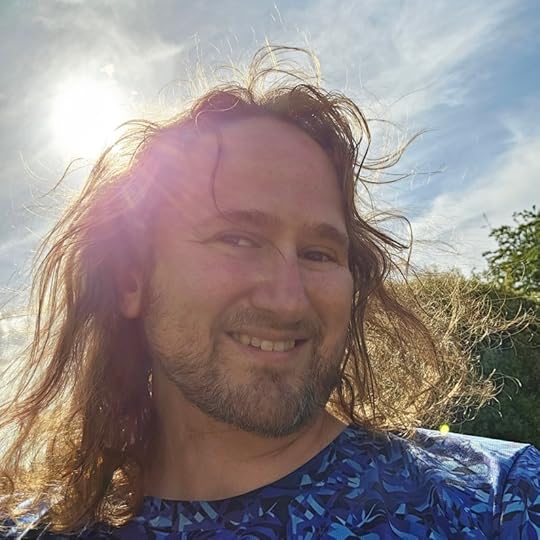
MC Author, in some worldly circles known as Matt (he/him), carefully balances horror, fantasy, dystopia…basically the darker side of human nature to ensure what is created is relevant, challenging, enriching and most importantly enjoyable to his readers.
He wants you to see in his books real people behaving in real ways whilst they battle very not-real-world demons, sometimes literally.
Author Links:
Threads: @mattcauthor
Instagram: @mattcauthor
Website in development!
Author page: Amazon Author – Matt Corton
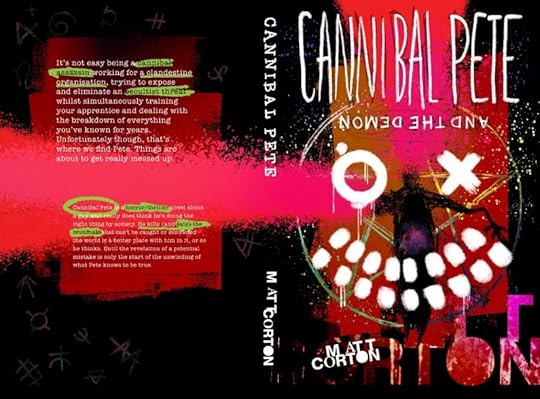
What draws you to punk horror in general, and can you tell us more about this subgenre for those not familiar with it?
So it’s a subgenre that whilst I wouldn’t claim I have created, I hadn’t seen very much elsewhere. I love horror, and I love creeping people out with my writing, but the horror I was attempting wasn’t really working. The punk concept was born from forcing myself to write much more quickly, loosely and with more freedom – I found the best way to do that was to think about how to get the writing “in your face”, writing with attitude. Punk seemed to fit, particularly as I’m dealing very much with concepts like society’s underbelly, the things that lurk in all of us and rejecting what’s being fed. With that said, punk also pretty much always had a message and I like to think that what I write not only entertains, scares/creeps out and shocks, but that it has something to say as well.
What makes punk horror the best genre for your novel Cannibal Pete? E.g. punk often rages against consumerism, so does cannibalism as a central theme/element fit into this?
Not consumerism as much as the standards of society that everyone accepts and what happens when you don’t abide by them. It’s perfect for Pete, and the ones that will follow in the “universe”, that they find themselves apart from what everyone else believes, but also desperately want to make things better – Pete is just a little confused about the best way to do that, it would seem!
So it’s not very much about punk fashion, or even ’90s (the period it’s set) fashion or culture, as much as it’s about the attitude and ambition of it.
In addition to that, the short, punchy writing style I adopted – I was determined to keep it under 70k words – forced me to focus on moving things forward, creating and maintaining the energy. I think this came off as by far the most common compliment I’ve received is that it’s a “page-turner”, which is, to me, something created by that punchy energy.
What gave you the idea for Cannibal Pete’s main character, and how did you develop him from that first idea to the final version?
Pete started off like a lot of my novels start off – as a short story idea. I’d been toying with the idea of a cannibal having an apprentice, something which did carry over into the finished version, and once I’d started writing the short story I found there was a lot more there. (NB, this happens a lot and I very rarely finish writing short stories!). I had also been mired in constant edits (version 16 now) of a WIP called Ghosts, a horror novel set in a fictional future, as well as resurrecting another WIP called The Thirteenth, also set in the future and whilst I was desperate for something new, I realised that the recurring themes in those fitted very well with Pete, so I borrowed a few characters and themes from those WIPs and set to it.
It was by far the easiest book to write that I’ve written in part, I think, because I could see how it could fit into a universe of novels around the same concepts. I was excited, not just “trying to finish it”.
Pete himself grew from a caricature of a misguided do-gooder to what I think is a fleshed-out stark consideration of whether ends justify means, both from him and those who helped make him that way.
The main horror of the book is Pete himself, and I love the idea that I’m playing with that you can fight evil with a bigger evil, not because you want to but because you might have to.
What was the premise of your alternate 1990s UK, and how did you develop the worldbuilding for it?
A lot of this will be revealed in future books – but essentially, the world is the same as it was then, or at least so far as people can see. What’s different is what’s going on behind the scenes, the things that Joe Public doesn’t know about.
I very deliberately set it before the internet and mobile phones were commonplace, which instantly gives you more scope with the worldbuilding because characters aren’t just looking things up on a search engine and the idea that things could be occurring completely in the shadows seems much more believable in that time.
Part of that underbelly that I’ve expanded is what corporations, governments and other organisations are doing when they’re all working to make sure nobody is looking (Pete is, for instance, an assassin working to rid the world of criminals that can’t be caught the traditional way, with the full cooperation of senior police and politicians).
The occult also features as part of this underbelly – something that will definitely become a central point later in the universe. London is very familiar to me so I wanted to start there but the rest of the books will jump about a bit more, although staying focused in the UK. In short, I wanted a very real sense of “what lies beneath” the happy facades.
What inspired the idea of connected books, rather than a series?
I think this is more because that’s what I like to read! I’m a huge fan of the Dresden Files, for instance, which whilst it’s advantageous to read previous instalments, you can read each of individually and still enjoy the ride.
Same with Marvel movies, each one is a self-contained thing and can be watched in a variety of orders, but they all interlink in some way. That’s how I want the Punk Powerful series (I really need to stop changing the name of it) to be – books that people can read and they’re a standalone story.
They can be read out of order almost, but there’s themes, characters and the like that will swap about between them and by the time the universe expands, you won’t have to read 12 books to get the idea of number 13. I also liked the idea that it makes easier to bring other authors into the fold on the universe, making it easy for people to carry on the stories themselves, write other stories in the universe I’ve created and expand it – which is hard to do in a closed off series because everything else then becomes a prequel (no shades to prequels, just not my thing).
I like the idea of a universe of writers all writing in the same vein, in the same time, with the same characters and telling a vast array of different stories. Just too hard with a set order.
Do you have any future publication plans, anything we can look out for?
Cannibal Pete and Tara will be out in 2025. Next year will also see The Casebook of Dr Archie Lagoon (my stab at folk horror) and after that, a reworked Ghosts will see it brought back from the future to the ’90s and I’m sure you can guess the subject matter of that from the title! In all, I’ve got 10 books planned, hoping to release one a year.
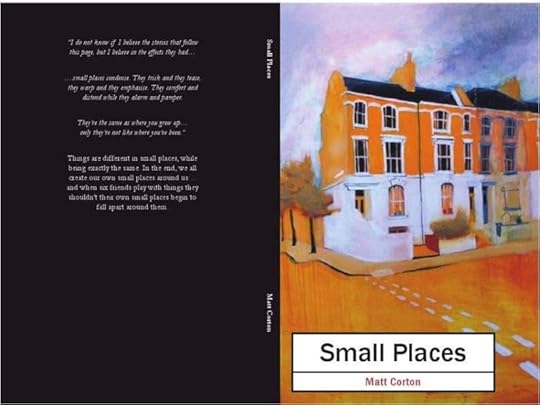 Like This? Try These:
Like This? Try These:
October 23, 2024
Author Spotlight: Katy Haye
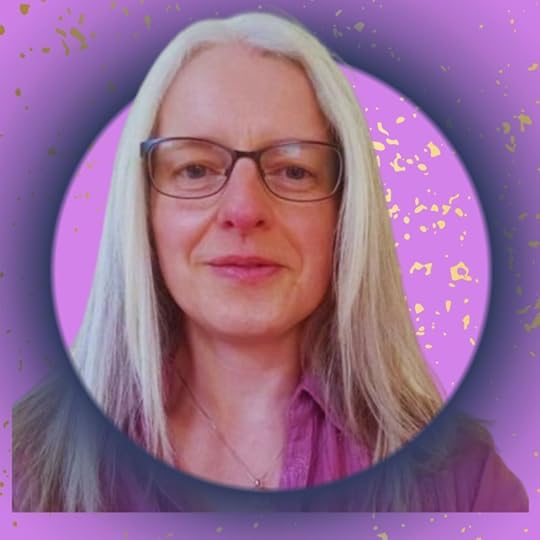
Katy Haye lives in the UK where she leans into the Brit stereotype by drinking gallons of tea, and the writer stereotype by staring into space and letting a solid 50% of the tea go cold.
When not writing, she can be found enjoying her garden or spoiling her two indulged cats.
Author Links:
Newsletter sign-up: KatyHayeNL
Website: katyhaye.com
Twitter/X: @katyhaye
Instagram: @katyhaye
Facebook: katyhayewriter
Goodreads: Katy_Haye
Photo by Elaine Bernadine Castro on Pexels.com
" data-medium-file="https://i0.wp.com/cmrosens.com/wp-con..." data-large-file="https://i0.wp.com/cmrosens.com/wp-con..." tabindex="0" role="button" src="https://i0.wp.com/cmrosens.com/wp-con..." alt="hand holding a slice of watermelon with blue swimming pool water in the background" class="wp-image-12969" srcset="https://i0.wp.com/cmrosens.com/wp-con... 1024w, https://i0.wp.com/cmrosens.com/wp-con... 300w, https://i0.wp.com/cmrosens.com/wp-con... 768w, https://i0.wp.com/cmrosens.com/wp-con... 1536w, https://i0.wp.com/cmrosens.com/wp-con... 1200w, https://i0.wp.com/cmrosens.com/wp-con... 800w, https://i0.wp.com/cmrosens.com/wp-con... 600w, https://i0.wp.com/cmrosens.com/wp-con... 400w, https://i0.wp.com/cmrosens.com/wp-con... 200w, https://i0.wp.com/cmrosens.com/wp-con... 624w, https://i0.wp.com/cmrosens.com/wp-con... 1733w, https://i0.wp.com/cmrosens.com/wp-con... 1650w" sizes="(max-width: 825px) 100vw, 825px" />Photo by Elaine Bernadine Castro on Pexels.comOperation Olive Branch: https://linktr.ee/opolivebranch
GoFundMe’s Highlighted by Authors for Palestine Event: https://afp.ju.mp/#info
For the AfP event we have selected the following 3 families to help boost their fundraisers. The details below were taken from the OOB spreadsheet.
Mohammed’s fundraiser: GoFundMe
Mohammed’s Instagram: @mohammedalbaredei
Ibrahim’s fundraiser: GoFundMe
Ibrahim’s Instagram: @ibrahimwithi
Rula’s fundraiser: GoFundMe
Rula’s Instagram: @rula_mohammed
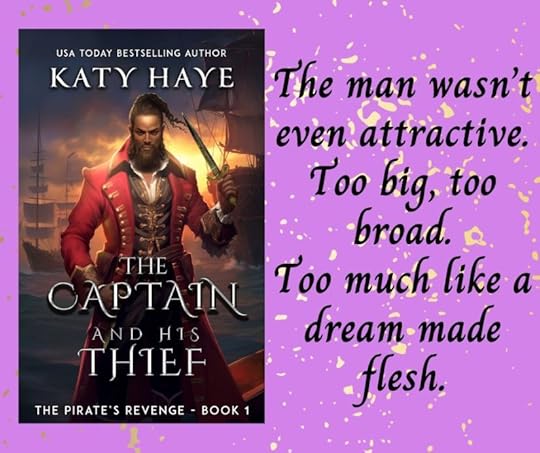 xr:d:DAGARGRwe30:15,j:8359103696784855754,t:24032514
xr:d:DAGARGRwe30:15,j:8359103696784855754,t:24032514You were one of the authors involved with the Authors for Palestine event – can you tell us why you chose to get involved with this, and which of your works you put up as raffle prizes?
I’ve been a low-key supporter of Palestine for years (by which I mean, supporting a charity working in Palestine and signing petitions and sending the occasional email to my MP). Like many people, I was horrified by both Israel and the world’s response to October 7th and needed to do more.
I was thrilled when a young man in Gaza, Akram, reached out to me on social media (we followed each other on Twitter) and asked for help. Finally – something concrete I could do to help! I set up a fundraiser for him (https://gofund.me/11ce9bab – still open for donations which are so needed and so, so appreciated!) and have been posting about the genocide and boosting him and others ever since.
The Authors for Palestine event was another welcome opportunity to help. It also provided a much-needed sense of community. It’s hard not to feel isolated when the media is acting as though nothing extraordinary is happening while a genocide rages, and “normal” life continues relentlessly. It was a breath of fresh air to join a group of people all wanting to help. I offered a paperback copy of Assassin, the first book in my Prince’s Soulmate series. All participants could also get a download of my short story collection, Only One Bed.
Do you find your sense of social justice and activism informs the philosophy of your writing, in terms of narrative and character arcs? If so, how?
I believe one of the most important roles of stories is to debate who we are – as people, civilisations and as humanity itself. A key role for science-fiction and fantasy in particular is to tell us who it’s possible to become, on both a personal and a societal level. Especially with the world as it currently is, I want to read and write stories that give hope for what we’re capable of becoming. My stories are set in worlds with medieval-levels of tech, but I use that to develop ideas around cross-cultural harmony, gender equality and queer normality, largely because that’s important for me in the world I live in.
As I age, I’m getting more radical (or perhaps that’s just a reflection of the world right now!). I’m currently undertaking a course on non-violent resistance and I’m planning a new fantasy world with a strong element of community and collective action rather than the usual myth of a single, extraordinary hero who rises up and makes everything better. I’m starting to wonder if myths of a lonely hero who is the only one able to spearhead change have been promulgated deliberately to stop us understanding the power we have if we stand together. And if nothing else, it’ll be an interesting writing exercise!
In The Merchant and His Lout you have some strong themes of familial betrayal and abandonment – how does romance (and specifically pirate romance) give you space to explore these heavier themes?
Romance gets so much snobbish denigration, but I adore it! For a start, human relationships are a key part of everyone’s life and romantic relationships are a big element of that. And crucially, romance stories are a known quantity – as a reader, you know characters will meet, endure ups and downs, and end united.
With that pre-established, as a writer you can then have fun with what else is happening in the story. In The Merchant and his Lout, it meant I could have Zakaria’s family absolutely pull the rug out from under him with the assurance that everything would – somehow – work out okay in the end.
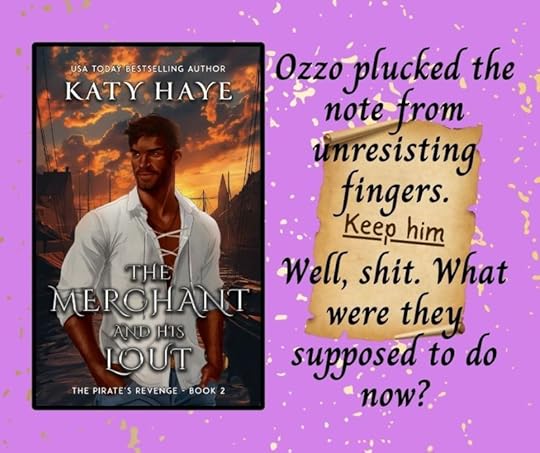
What appeals to you about queer pirate romance, and when did your interest in this subgenre start?
In the same way that Zakaria looks enviously at Ozzo’s laid-back, free-spirit approach to life, I may very well have chosen to write about a pirate crew because they’ve made their own community and are largely free of social norms, which is very appealing to someone still fighting “good girl” expectations from my upbringing.
I think we all like pirates because they represent that sense of freedom from social constraints that we’d all like to enjoy – at least temporarily! And my interest in writing the series started when pirate captain Hakan (who discovers his own happy ending in The Captain and his Thief) swaggered on scene in Hostage, the third in my Prince’s Soulmate series, and utterly stole the stage. He was the cliché of the side character begging for his own story from the moment he appeared!
What research have you done for your worldbuilding, and can you share something fun or interesting that you learned during this process?
I write medievalesque worlds because I’m fascinated by medieval Europe (on the woo-woo side of things I’m convinced I had a very happy past life in the middle ages!). So there’s a lot of background research that’s been on-going for years which informs my books and worlds. To counter that, I write fantasy because I don’t want to be constrained by what’s real or what actually happened. I was in conversation with a couple of historical writers not long ago and they were discussing how they research even the tiniest things meticulously and I was, “Yeah, I just do what I like and if the vibes feel right, that’s good enough.”
Researching for my pirate books was, naturally, great fun. My best discovery was that pirate crews provided an early version of gay marriage. Same sex crew members might pair off (resulting in the word ‘matelot’ for sailor evolving to become the modern ‘mate’ as in friend), and if one was then killed (it was a risky profession!) their partner would get their share of booty.
Do you have a favourite romance trope to write, and if so, what is it?
I have so many favourites! Looking at my books, though, I’d have to say I especially love Opposites-Attract or Fish-Out-of-Water.
I love putting characters somewhere they don’t belong or throwing them into a new world or a new relationship where they’re completely off-kilter and seeing how they get on. Assassin (and the rest of the Prince’s Soulmate series) was an extreme example of this.
Kit is off-balance from the moment he meets Prince Talal, and has to revise almost everything he believes about the world. Writing that was terrific fun – and, this being a romance, I gave him Talal for stability while he was finding his way in his crazy new world. Similarly, Zakaria upsets his own world, realises he’s way out of his depth, and learns to navigate a new reality with Ozzo and the rest of the crew’s help in The Merchant and his Lout.
Like This? Try These!S.R. Severn – more pirate romance (m/f)!
EA Noble – the power of community, queer romance, Black and plus size leads
Vesper Doom – sapphic romance, contemporary fantasy
Merlina Garance – romance, paranormal mystery
Freddie A. Clarke – cyberpunk
Shane Blackheart – queer erotica, dark fantasy
See the full list of Author Spotlight interviews and find more authors to enjoy!
October 16, 2024
Author Spotlight: Finn McLellan
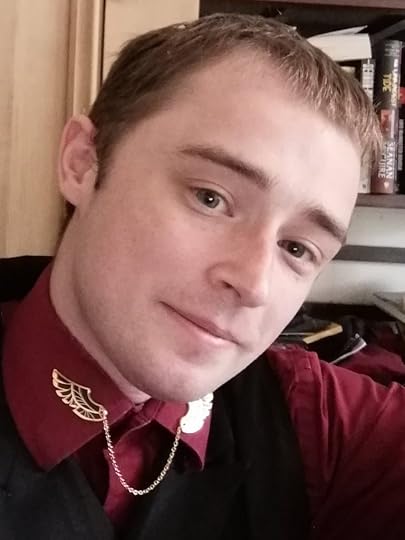
Finn McLellan (they/he) is an autistic disabled transmasc butch fantasy writer, hailing from the wilds of the northern UK.
When they’re not writing they’re busy immersing themselves in a variety of ridiculous hobbies, most of which also involve disappearing into fantasy worlds and/or waving swords at people.
Author Links:
Website: saranadosfiction.com
Introduction to: Argentum in Aqua
Bluesky: house-of-five.bsky.social
Mastodon: wandering.shop/@house_of_five
Patreon: patreon.com/saranadosfiction
Ko-Fi: ko-fi.com/saranadosfiction
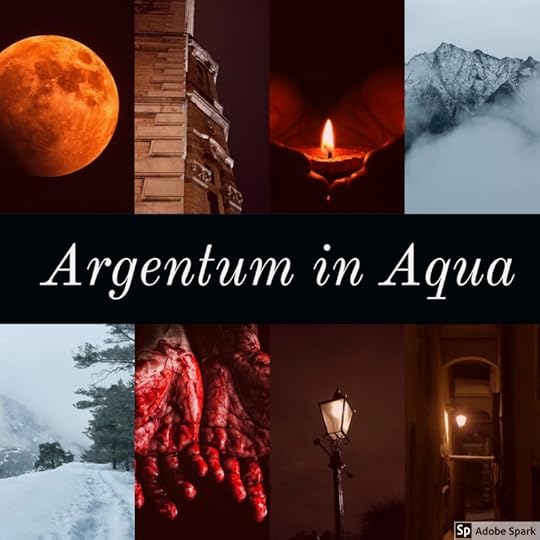
Why choose Gothic Gaslamp as a fantasy setting for your serial, Argentum in Aqua?
So, honestly, that happened somewhat by accident! I’ve been fascinated by the Gothic ever since I was old enough to start reading Victorian literature – both Dracula and The Woman in White were very much formative influences – and, when I started writing my own fiction, I knew that I wanted to experiment with some of the same tropes and feelings.
I’ve also always loved fantasy, and when I started creating my own fantasy world to set stories in (or, at least, a more fleshed out version of some of the worlds I’d been experimenting with before that point), the Gothic influences just ended up bleeding into it because I was writing about things I enjoyed and focusing on building a world I wanted to spend time in.
(Knowing that what I was writing was called gaslamp fantasy came a lot later – I’d been calling it dark/low fantasy for a while and being mildly irritated that that description didn’t quite fit, and then came across the term in the context of Girl Genius [seeing as the term was coined to describe that particular comic originally] and had a sudden moment of ‘oh, hang about, that’s what this is!’)
How has your writing – and the serial itself – developed since the first installment in 2018?
Hooboy. So the easy answer to that is ‘I got better at writing’ (which is definitely true, and part of the reason that I’m banned from editing the early chapters until this draft of the trilogy’s finished, because otherwise I’ll just get distracted trying to rewrite things), but there’s a wee bit more to it than that.
When I started posting chapters in 2018, I didn’t actually plan on making Argentum a serial at all – I thought I’d post a few chapters as a teaser, then write the whole thing offline, then self-publish. Turns out that people actually reading and commenting on your writing is a whole lot of fun, and that having readers is a very good way of making my brain remember that writing is something I enjoy doing, and thus serialisation occurred.
What that’s meant in terms of the serial itself is that the chapters have become a wee bit more self-contained, and I’ve wound up doing a lot more thinking about balance in POVs – who have we seen a lot of recently, who might readers want to see more of this month, and so on. It’s also meant that I’ve become a lot less worried about how many words I’m writing and how long the books are going to end up being: the story will take as long as it takes, and that’s fine.
While writing the serial, have any characters surprised you in terms of their arcs and development, or has everything gone according to plan?
Oh, my crew – and half the secondary characters, in fact – seem to absolutely delight in surprising me on the regular, which means there’re a whole lot of arcs and plotlines which have absolutely not gone the way I originally expected them to.
As a very obvious example, Anneke (who I’m going to talk more about in a moment) was originally intended to be a one-scene secondary character who showed up to explain some plot to one of the MCs, provide a little comic relief along the way, and then promptly exit stage left to go have their own adventures somewhere else. Instead, they showed up, took one look at Fest (the MC in question) and apparently decided that he a) wasn’t going to get anywhere without their help and b) could really do with a new best friend (which, honestly, I’m not going to argue with).
Also one of my villains decided to play with poisons almost entirely off his own bat, which was an unexpected surprise. Though… we’ll see how that pans out for him.
Other than your MC, which character do readers love, and which do they love to hate?
So you remember I mentioned Anneke just now? Turns out that a loudly opinionated very autistic priest of the goddess of liminal spaces and transitions with a small pile of deeply specific academic grudges is exactly the kind of person several of my readers absolutely love – I actually feel a wee bit bad that the fact that Silver in the Ashes is mainly set outside the city means that we don’t see more of them.
But hey, the next book’s back in the city proper, and they’ve not been idle while the crew’s been away. In terms of love to hate, I think that crown very much has to go to Avebury, who’s the lead player in my villainous trio.
He’s a smug, arrogant, bigoted [unprintable] who’s very much the kind of person who thinks that calling someone a ‘credit to your species’ or telling someone that they’re ‘doing remarkably well despite your obvious disadvantages’ in a calm and polite voice is an excellent idea, and that anyone who gets upset about that kind of thing is just showing exactly why he’s right to believe himself superior to them… and that’s before we get into the murder, blackmail, poisoning, manipulation, and everything else he’s got going on.
How do you approach queerness and queer identity in your work, and what informs this approach?
So in terms of Argentum, I’m very much writing a world where queerness is just seen as a natural part of life (to the point that it’s widely known and accepted that magical physical transition is a service offered by temples). That doesn’t mean there’s no bigotry at all around it, but it’s personal rather than societal and generally limited to words rather than actions – it’s perfectly legal and generally seen as unremarkable for two men to get married, for instance, but a small number of folk might make snide comments or refuse to refer to them as husbands because of personal prejudice.
On a specific (non-exhaustive) note regarding queer identity among the crew, Viola and Archer are both quite open about the fact that they’re attracted to people of their own gender (Viola’s a lesbian, while Archer’s bi), and wouldn’t generally expect to attract more than a raised eyebrow or a muttered comment as far as negative reactions go. Sabbat, on the other hand, is very explicitly not open about the fact he’s trans, though in his case that’s much more to do with wanting to keep his private life private (though he did also have a bad experience with being outed when he was younger).
Part of why I’m writing it that way is a desire to write a story where neither I nor my readers have to worry about encountering the kind of bigotry we might in the real world in that regard, and part of it is, honestly, wish fulfilment – I’d love to live in a world where physical transition just involved going to a temple and getting a tattoo!
If you had to pick 3 things you want readers to take away from your work, what would they be?
Ai-yah, ask me a hard one why don’t you? No, but for serious, this one is tricky because I’m very much someone who writes with the story in mind rather than the message (with the exception of some of my short stories, which are very much more message-forward). If you sit me down and make me choose, though:
1) You don’t have to go through awful things on your own. If you’re struggling, talk to someone you trust and who cares about you, and let them help you.
2) Just because bigotry’s wrapped up in nice words and a posh accent doesn’t make it not bigotry.
3) Trans folk can be heroes too – and, more specifically to this story, we can be heroes who’re more grey and more complex just as much as cis folk can. (Also trans guys and trans masc folk are just as much allowed to swear and drink and smoke and behave in ‘adult’ ways as any other adults – we’re grown, not children who can’t be trusted with our own bodily autonomy).
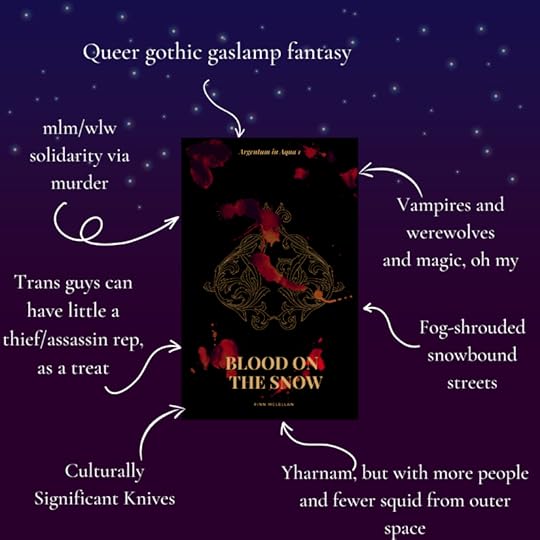 Read NowLike This? Try These:
Read NowLike This? Try These:
October 13, 2024
My Own Author Interview!
Reblogging from the lovely Chaos Gays and TeaTrays – if you’re liking the author spotlight series, you should definitely check out CGTT as well.
My book THIRTEENTH is now out (again) and you can grab it from the bookstores and eBookstores of your choosing. The podcast remains up, so you can listen to the whole novel for free on Eldritch Girl: Weird Gothic Stuff & Nonsense, S02. Theme music by Gemma Cartmell.
Meanwhile, enjoy this fun interview!
C M Rosens
October 9, 2024
Author Spotlight: Merlina Garance
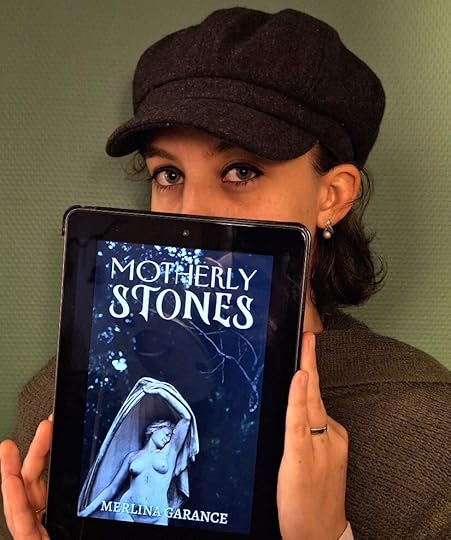
Merlina Garance (she/they) collects chronic fatigue syndrome symptoms like trading cards but when they’re not too busy lying down or writing, they like: cuddling their dog and life partner (not especially in that order), baking but especially eating the results, hikes in nature, seeing their friends and family in quiet environments, especially if pizza is involved.
They live in France in a mouldy flat with a nice attached garden.
Author Links:
Website: merlinagarance.com
Newsletter: merlina-garance.ck.page/87df3a4ce8
Ko-Fi: ko-fi.com/merlinagarance
Goodreads: Merlina_Garance
Amazon: Merlina Garance Author Page
Instagram: @merlina_garance_author
Bluesky: @merlinagarance.bsky.social
Facebook: @Merlina_Garance_Author
Add The Motherly Stones to Goodreads: goodreads.com/book/show/203884799-motherly-stones—a-paranormal-mystery-romance – A dark, mysterious romance with bisexual and a-spec representation.
Photo by Elaine Bernadine Castro on Pexels.com
" data-medium-file="https://i0.wp.com/cmrosens.com/wp-con..." data-large-file="https://i0.wp.com/cmrosens.com/wp-con..." tabindex="0" role="button" src="https://i0.wp.com/cmrosens.com/wp-con..." alt="hand holding a slice of watermelon with blue swimming pool water in the background" class="wp-image-12969" srcset="https://i0.wp.com/cmrosens.com/wp-con... 1024w, https://i0.wp.com/cmrosens.com/wp-con... 300w, https://i0.wp.com/cmrosens.com/wp-con... 768w, https://i0.wp.com/cmrosens.com/wp-con... 1536w, https://i0.wp.com/cmrosens.com/wp-con... 1200w, https://i0.wp.com/cmrosens.com/wp-con... 800w, https://i0.wp.com/cmrosens.com/wp-con... 600w, https://i0.wp.com/cmrosens.com/wp-con... 400w, https://i0.wp.com/cmrosens.com/wp-con... 200w, https://i0.wp.com/cmrosens.com/wp-con... 624w, https://i0.wp.com/cmrosens.com/wp-con... 1733w, https://i0.wp.com/cmrosens.com/wp-con... 1650w" sizes="(max-width: 825px) 100vw, 825px" />Photo by Elaine Bernadine Castro on Pexels.comOperation Olive Branch: https://linktr.ee/opolivebranch
GoFundMe’s Highlighted by Authors for Palestine Event: https://afp.ju.mp/#info
For the AfP event we have selected the following 3 families to help boost their fundraisers. The details below were taken from the OOB spreadsheet.
Mohammed’s fundraiser: GoFundMe
Mohammed’s Instagram: @mohammedalbaredei
Ibrahim’s fundraiser: GoFundMe
Ibrahim’s Instagram: @ibrahimwithi
Rula’s fundraiser: GoFundMe
Rula’s Instagram: @rula_mohammed
You were one of the authors involved with the Authors for Palestine event – can you tell us why you chose to get involved with this, and which of your works you put up as raffle prizes?
I wasn’t educated about Palestine before October 2023, when the genocide started. That’s when I began understanding the horror of what Palestinians have been subjected to for decades. I tried to do my part about informing and donating, but there is always a frustration about not being able to do more, so when the AFP event started it felt right to join. I had offered five copies of my debut novel The Flourishing, and one of my latest release at the time, Dandelion.
Do you find your sense of social justice and activism informs the philosophy of your writing, in terms of narrative and character arcs? If so, how?
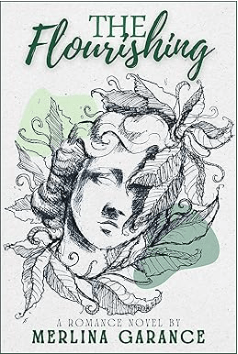
What a great question! It does indeed. For example, I used to work with victims of domestic abuse and this influenced a character in The Flourishing. The main POV character, Andy, got the chance to save Thalia from a bad situation, and that was me projecting all the times I wished I could have done the same. I’ve actually written a piece about angst and why I love it (it’s on Katherine Blakeman’s blog and the link is on my website). I did some soul searching and realised that it’s a chance for me to take characters who are suffering and bring them to the happy ending they deserve. That means I tend to write realistic situations that touch a number of topics (queerphobia, racism, transphobia) while never being too dramatic or graphic on page because it’s hard for me to write, and then I navigate to find my characters the best possible happy ever after for them.
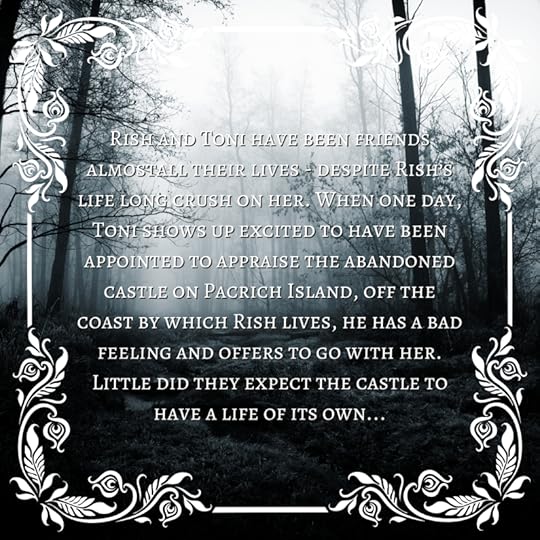
Let’s talk about your work a bit more; you have a new release coming out in October, can you pitch it to us?
Of course! It’s a paranormal novella with a friends-to-lovers romance at its heart. It’s set in the 90s too, because having mobile phones would have made it too easy for the characters… Rish and Toni have been friends almost all their lives – despite Rish’s life long crush on her. When one day, Toni shows up excited to have been appointed to appraise the abandoned castle on Paicrich Island, off the coast by which Rish lives, he has a bad feeling and offers to go with her. Little did they expect the castle to have a life of its own…
What did you draw upon when creating the fictional setting for Motherly Stones (Paicrich Island)?
I think I mashed up some real settings I have been to, or have seen in pictures. As a kid, I used to play quite often in the ruins of a local castle (under supervision, it was safe!). One of my friends also does a bit of urban exploration and I think I mixed my experience in the ruins with the photos they showed me! All in all, I just wanted a haunted castle to trap the characters in, and the island meant they were even more isolated and would have to spend a few days there without access to help. This sounds really cruel when formulated like that, haha!
Is the representation in Motherly Stones typical of the rep in your work, and can you talk a little bit about why this rep is important to you?
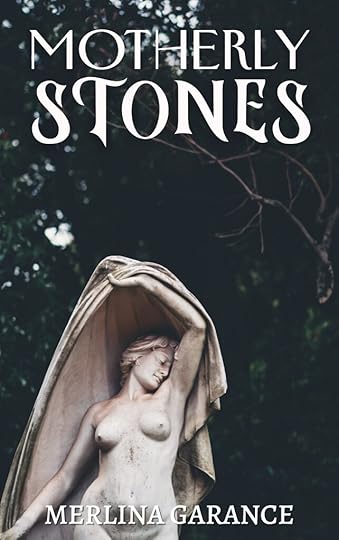
Yes and no. It’s typical in that it’s queer, and I always aim to be as inclusive and diverse as possible. And no, because it’s the first book I publish with characters with those identities. Rish is inspired by my husband (a bunch of the dynamic between Rish and Toni is, especially how reckless Toni is vs Rish’s attention to safety and germs!) and Toni kind of by me.
I do tend to include bi/pan characters, and demisexual because that’s my own identity, but in my already published books you’ll find lesbian characters, gay, genderqueer, nonbinary and I have a release next year with a trans woman.
I also want to be mindful about racial diversity. We are raised to consider white as the norm so I’m training myself to challenge that by always asking myself : does this character need to be white? Then I try and figure out their background and how that enriches the story.
What 3 things do you want readers to take away from your work?
The main one is tolerance/acceptance. We as humans can always do better in that regard, no matter how openminded we already are, and it’s important to keep challenging ourselves to understand new identities and backgrounds. I know I used to be more close minded about a lot of things, and I still try to keep learning. So acceptance towards others, but to ourselves as well. They tend to go hand in hand, I like to think. If you can find yourself in one of my characters, and feel yourself loved through the eyes of another, then that’s a big win for me.
Another would be emotion. What I really want is for readers to feel something while reading my work. Good or bad, I just home my writing touches a little part of your soul!
And the last would be fun! I also write to entertain myself and others. I love writing dialogue, especially banter, and I hope one of these guys’ interactions makes you laugh!
Like This? Try These!E. A. Noble for diverse SFF, queer casts, fantasy, romance, spice
S.R. Severn for fantasy, dark romance (cishet)
Vesper Doom for magic, queer romance, contemporary fantasy
Check out the full Author Spotlight list!
October 2, 2024
Author Spotlight: Kaos Emslie
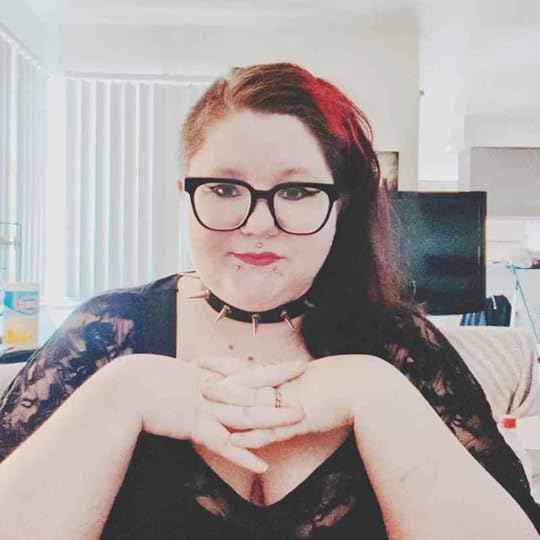
Kaos Emslie (they/them) lives in Southern Arizona with their two children and three cats. They are surrounded by pens, paper, and books constantly. Their projects generally fall under the horror genre, but sometimes have romantic or fantasy elements. They have a dangerous caffeine addiction and are constantly fighting to keep a hold of their ever-slipping sanity.
Author Links:
Instagram: @nightmare.food_
Threads: @nightmare.food_
Website: kaosemslie.wixsite.com
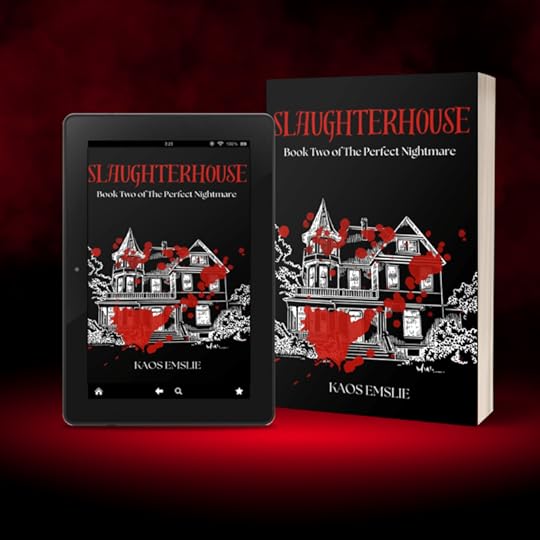
What drew you to eldritch horror and what does that mean to you as a genre?
I think I just sort of fell into it with this story. I had been trying to read Lovecraft’s work for a year or two but he is boring as all Hell, so I had almost no understanding of the genre, I just knew something from somewhere else was bound to a House in a coastal town and it drove people insane, and that’s how I started this whole series in 2006. Now, I know a lot more about cosmic/eldritch/Lovecraftian horror and certain things that go with it. I throw a lot of psychological horror elements into my stories as well.
What were your main influences for Slaughterhouse, and how did they help to shape the book?
The comic series Johnny the Homicidal Maniac by Jhonen Vasquez and the book House of Leaves by Mark Z Danielewski really played the biggest roles in inspiring the story at its core. Without those two works, the story wouldn’t have developed into what it is now. It may never have existed. But Slaughterhouse, as its own standalone story, is a roadmap to madness, it is a period of my life wrapped up into neatly packaged chapters and scenes, it is a step behind the proverbial curtains into my mind. I took a lot of inspiration from music for this book–the chapters are all titled after songs.
What are the main themes of Slaughterhouse and how did these develop, did you always know you wanted to write a book centring on them or did they develop more organically?
Identity is the main theme of the book, and it’s strange because it feels like it has always been this way, but I didn’t really know what it was until I sat down and really took a deep look at the story and what I wanted from it. On the outside, it looks like a simple Good vs Evil story, but when you get down into it, there’s this Search for Self that Nightmare does, and with each move forward toward the end, they learn more and more about themselves as a person, as a god.
Tell us about the queer and mental health/disability rep in your novel, and why this is important to you.
Nightmare Carroll, our Main Character, is Nonbinary and Demisexual/Bisexual. They start the story in a Sapphic relationship. Nightmare was raised by a father who was there as a breadwinner, not a parent, and a narcissistic mother. They have C-PTSD. They have intrusive thoughts, Alexithymia (“no words for emotions”), and racing thoughts, and feel like they have trouble with empathy. Nightmare has ADHD and their experiences are based on my own. This book has been incredibly cathartic to write, not just because I feel myself represented in my characters, but because Nightmare has carried me through some extremely tough times. If it weren’t for them, for their story, I don’t know if I’d be where I am right now.
How do horror and sapphic romance go together in the novel?
Oh, I wouldn’t call it a romance–it’s all rather tragic, really. But we couldn’t have the horror without the love story. Nightmare needed a connection, they needed something emotional that made them human, a friend or a pet or something. Well, I wrote in Hannah and she sort of wiggled her way into Nightmare’s heart and I couldn’t stop it once it started. Lol.
Slaughterhouse (05 Oct 2024) is Book 2 of A Perfect Nightmare: can it be read first? What is the best way into your writing and what would you recommend to a new reader?
I’m all for reading books out of order! But seriously, if you want to stick to chronological order, Paint It Black is first, then Slaughterhouse. Serenade is sort of a prequel novella featuring Andy Hines, so it’s kind of a side quest you can check out between books.
September 30, 2024
Trick or Treat? Thirteenth’s [Re]Launch Party 10/10
I know, it’s not on the 13th… but my novel THIRTEENTH is coming out next month! Celebrate with me on Instagram and Bluesky at 7pm British Summer Time (BST). (Check out the Time Zone Converter if you’re not sure what that is in your time zone!)
I thought I’d do some fun posts on Instagram for it.
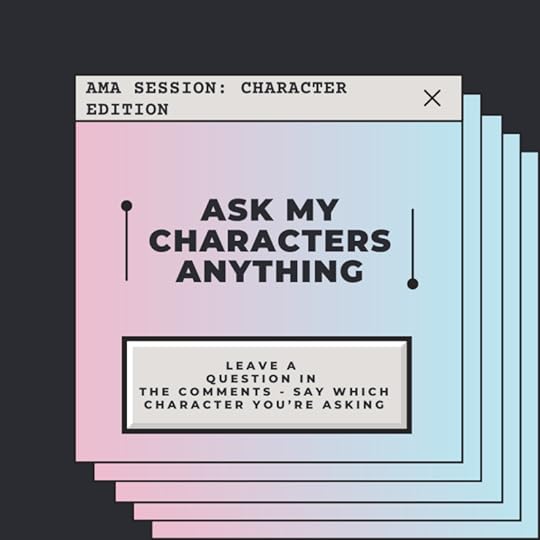
If you want to ask my characters a question, interact with this graphic on Instagram when it’s posted and leave a comment with your question. Say who it’s for! If you’ve read THIRTEENTH in its first form, feel free to ask the characters anything. If you haven’t read THIRTEENTH, you can ask THE CROWS characters anything… what’s their favourite colour, what’s their darkest secret… anything you like. To submit questions in advance, fill out this form: https://forms.gle/yup76vE1LBAZAKJ56
I’ll be doing this on Bluesky as well, using the tag #ThirteenthAMA, and you can also comment on the post with this graphic in it.
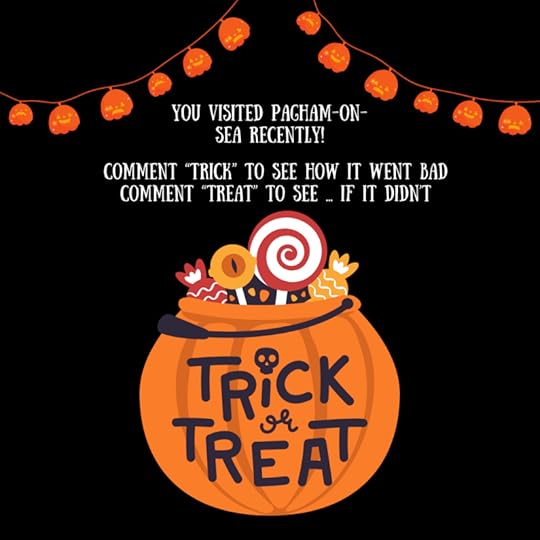
The second graphic is TRICK OR TREAT. The premise is that you have visited Pagham-on-Sea recently, and to find out how your visit went, comment “trick” to see if it went badly, and “treat” to see if it went well… just a fun flash fic game for you!
I’ll be doing this just on Instagram and Bluesky, so you can play on either platform. Comment on the posts with this graphic.
View this post on InstagramA post shared by C. M. Rosens (@cm.rosens)
Finally: the giveaway prize draw. Interact with the embedded Instagram post linked above – like, share and comment with your favourite monster to be entered into the draw for a signed author copy! This is open internationally. As a bonus entry, you can tag 3 friends (who don’t mind being tagged like that, so do check first, I know that can annoy some people and we don’t want that!)
Three ways to play – I hope you join me!
Get The CrowsGet Thirteenth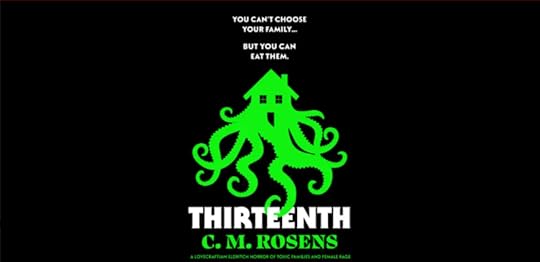
September 25, 2024
Author Spotlight: Alex Amenn
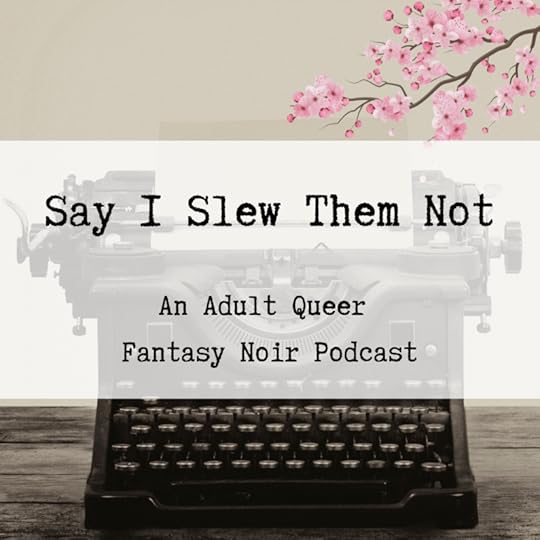
Nazime Page. Valerie Moore. Pepper Halloway. Alexander Phillips. Alex Amenn. Sam Amenn. They go by many names and personas.
They are an aro-ace, agender, autistic writer, podcast host, illustrator (but not a cartographer), sound mixer, producer, and marketer who loves all things anthropomorphic crocodiles, beyond questionable MCs, and Les Miserable references.
Say I Slew Them Not
is the first entry in their Ferdarian Gazette series and they are currently
writing the second entry which will focus on Demons and corrupt religious organizations. When they are not working on their fantasy noir series, they are writing about disgruntled astronauts turned mercenaries for a mercurial alien queen. They also discuss asymmetrical warfare and colonialism on their history podcast: the
Art of Asymmetrical Warfare
.
Stay updated on their projects by following them on:
Instagram: @pepperdaphoenix and @ferdariangazette,
Tiktok: @pepperdaphoenix
and by checking out their website: http://www.theferdariangazette.com.
Photo by Elaine Bernadine Castro on Pexels.com
" data-medium-file="https://i0.wp.com/cmrosens.com/wp-con..." data-large-file="https://i0.wp.com/cmrosens.com/wp-con..." tabindex="0" role="button" src="https://i0.wp.com/cmrosens.com/wp-con..." alt="hand holding a slice of watermelon with blue swimming pool water in the background" class="wp-image-12969" srcset="https://i0.wp.com/cmrosens.com/wp-con... 1024w, https://i0.wp.com/cmrosens.com/wp-con... 300w, https://i0.wp.com/cmrosens.com/wp-con... 768w, https://i0.wp.com/cmrosens.com/wp-con... 1536w, https://i0.wp.com/cmrosens.com/wp-con... 1200w, https://i0.wp.com/cmrosens.com/wp-con... 800w, https://i0.wp.com/cmrosens.com/wp-con... 600w, https://i0.wp.com/cmrosens.com/wp-con... 400w, https://i0.wp.com/cmrosens.com/wp-con... 200w, https://i0.wp.com/cmrosens.com/wp-con... 624w, https://i0.wp.com/cmrosens.com/wp-con... 1733w, https://i0.wp.com/cmrosens.com/wp-con... 1650w" sizes="(max-width: 825px) 100vw, 825px" />Photo by Elaine Bernadine Castro on Pexels.comOperation Olive Branch: https://linktr.ee/opolivebranch
GoFundMe’s Highlighted by Authors for Palestine Event: https://afp.ju.mp/#info
For the AfP event we have selected the following 3 families to help boost their fundraisers. The details below were taken from the OOB spreadsheet.
Mohammed’s fundraiser: GoFundMe
Mohammed’s Instagram: @mohammedalbaredei
Ibrahim’s fundraiser: GoFundMe
Ibrahim’s Instagram: @ibrahimwithi
Rula’s fundraiser: GoFundMe
Rula’s Instagram: @rula_mohammed
You were one of the authors involved with the Authors for Palestine event – can you tell us why you chose to get involved with this, and which of your works you put up as raffle prizes?
I grew up believing that never again meant never again, and so I’ve been active in anti-genocide/pro-Palestinian organizing since Oct 7th. Organizing with others can be very energizing, but it can also be exhausting, especially when your own government handcuffs itself to Netanyahu’s genocidal regime. I was feeling pretty hopeless when I saw the call for indie authors to take part in this giveaway. Seeing so many amazing authors and friends come together and raise funds for Palestinian families was what I needed to recommit myself to the struggle.
Then I read Mohammed’s, Ibrahim’s, and Rula’s stories and I knew the giveaway was something I needed to be part of. I also really appreciated that the giveaway focused its efforts on three specific families. There is so much going on right now, so many families in need, and this endless amount of pain and loss, it becomes overwhelming. I appreciated that the organizers, I’m paraphrasing here, but basically they said, “yes, there is a lot of need, but let’s help who we can because we’re only human and we can’t save the world, but, basically, saving one person is like saving the world.” And I thought, “Yeah, they’re right. It’s better to do something than nothing.”
I’m proud so many of us offered a wide variety of gifts to those who donated, I’m proud we raised 1800+ for the families, and I’m proud so many of us involved are still fundraising and sharing the needs of Mohammed, Ibrahim, and Rula, even though the giveaway is officially over.
I offered two illustrated sci-fantasy e-zines. The first story is called Firebird and it’s about Grigori, a disgruntled and traumatized mercenary cyborg, helping Mara, a wrathful energy spirit, get revenge on her colonizers and abusers.
The second story is called Yusupov and Marinov: Merchants of Death and it’s about Ruslan Yusupov and Anatoli Marinov, two astronauts turned mercenaries for an alien queen, protecting a weapon’s manufacturing cockroach inspired alien from several assassins hired to kill him. Their mission, of course, goes horribly wrong.
Right now, the illustrated versions of these two stories are only available through the giveaway. If you want to read the non-illustrated version of Firebird, you can find it in Ezra Arndt’s pro-bodily autonomy anthology: My Say in the Matter.
Do you find your sense of social justice and activism informs the philosophy of your writing, in terms of narrative and character arcs? If so, how?
Yes, absolutely. I don’t think I can write a story that doesn’t deal with social justice and/or activism. My biggest author dream is for my work to be included in the growing canon of decolonial literature. At the same time, I’ve been struggling with that desire because can I, a white writer, ever truly write decolonial literature? What do I, a white person, know of social justice anyway?
My instinct, of course, is to set up an evil, all white empire and then create a group of minorities to overthrow said empire. At first glance that might seem like a good decolonial premise, but it also runs the risk of telling a story that is not mine to tell. So, then I add some upstanding white person who sort of believes in the empire’s evil lies, but then sees the error of their ways, and helps the rebellion help succeed. I’m no longer telling someone else’s story, but now I’m potentially telling a white savior story or, at the very least, I’m giving the white character grace. I’m “not all white peopling” my story.
So, I took a step back and I engaged with a lot of decolonial literature and came to terms with the fact that I’m still in the beginning stages of my own decolonizing, anti-racist, activist journey. I don’t have the answers and that’s ok. I don’t need to write from a place of authority on what is and isn’t decolonial. In fact, what I needed to do was be completely honest and vulnerable and say, “yeah I don’t know anything, but this is what I’ve learned so far. This is where I am, please, tell me where I’m going wrong.” And so, my stories become a decolonizing journal of sorts and I hope it proves to be a progressive story. Like I start with an okish (hopefully) foundation with Say I Slew Them Not and by the end of the series, maybe I’ve achieved something almost decolonial.
What does that mean in terms of writing? I’m not a hundred percent sure because I’m still working it out, haha. Right now, my two biggest writing principles are: First, my white characters hinder more than they help, especially if they mean well and they’re always learning, always changing, always growing. They are going to have core values or views that are colonial or racist, etc and the story has to be about the evolution of those beliefs. Some characters are going to be able to grow and change but I also need to acknowledge when that doesn’t happen and why. If they don’t change, that doesn’t mean they leave the activist sphere, but it means that their approaches aren’t always the best and they can’t always be trusted because they still have this baggage.
And then the narrative has to become about that white character dealing with that, and again sometimes they’re going to acknowledge their limitations and sometimes they’re not and that’s when they become a danger. I approach the arc of my white characters and my colonizer characters (especially if they’re well-meaning) as “the road to hell is paved with good intentions”, because I think that reflects where I am in my own journey and where the United States leftist movement is in its journey.
Second, revolutionary violence is not only a direct response to the empire’s intransigent nature, but can be purposefully incited to further the empire’s goal. In the United States, we’re having a lot of conversations about “when violence is ok and when it isn’t and oh no you destroyed a Target store front! That is absolutely terrible!” Say I Slew Them Not joins that conversation and details why violence becomes an option for those fighting to be free, and how a white, colonial democracy will manipulate that violence to their benefit. No one is more treacherous than a white politician clinging to a colony and nothing is more insidious than colonialism. If a colonizing power can’t crush a revolution, it will destroy it with a thousand little cuts and betrayals.
White governments, in particular, are really good at turning people against each other, demanding compromises that undercut the resistance’s values, its leaders, and it’s goals, promising one thing and then doing everything in their power to turn that victory into a pyrrhic victory, and/or using the bigger colonial system to punish and suppress their formerly colonized subjects.
As a white writer, I can and do write about the destruction of these systems, but I also have to be brutally honest about how those systems are kept in place, how they survive long after they’re defeat because people will preserve that toxic way of thinking and nurture it until it’s strong enough to make a comeback, the lasting legacy and impact of this system on the formerly colonized and the colonizers, and that white people will commit to decolonialism until it reaches a certain stage and then it becomes too much.
I think as a white person, I’d love to write about that one white person who makes it all the way and it truly committed to decolonialism (and, for full transparency, there are a handful in the series), but as a decolonial writer, I have a duty to focus on those who struggle, those who falter, and those who fail, because we can never truly decolonize our minds unless we truly understand why it’s so hard to do it in the first place. Basically, if I’m feeling too warm towards my white characters I’m probably giving them too much grace, haha. But, I’m also still learning and I’m eager to see how other people respond to my stories. That’ll be the real test of where I am in my decolonial journey: if I can take feedback and adjust my writing, instead of getting defensive about it.
What gave you the idea to create Say I Slew Them Not in the text form of ‘found footage’ / a compilation of letters and edited interviews?
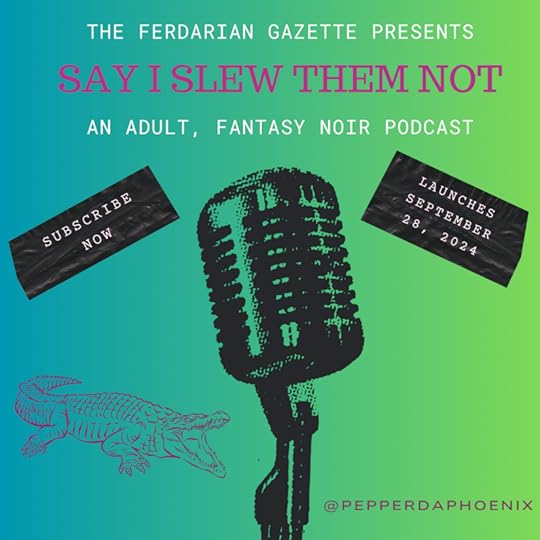
I was inspired by my love for history and its inherently biased nature. I was introduced to how skewed history can be by researching the American Civil War, but you can see it in every aspect of history because historians are reliant on primary materials and primary materials are written, collected, and preserved by humans who, themselves, are biased and so complete historical truth is almost impossible to achieve. You can only strive to get as close to the capital ‘t’ Truth as possible and that idea fascinates me.
I’m also a survivor of child abuse and nothing will make your question reality and the existence of truth more than your caretakers abusing you. So I already had this personal experience of not being able to trust my reality and then I go into this field, history, which is supposed to be academic and fact based, etc, and to find out yes, sort of, but also no, here’s a long list of biases that have plagued this field for centuries. I also specialized in asymmetrical conflicts from 1850-1950 and grew up during the United States’ war on terrorism, so not trusting anyone or anything became second nature, haha.
When I started Say I Slew Them Not, I knew I wanted to investigate the myriad facets of historical memory and how the past creates the future, but the future also creates the past because the very concept of past, present, and future rests on this concept of perspective and perspective is constantly changing. It took a lot of experimenting, but I eventually settled on this idea of a narrative at war with itself. So I took Kingsley’s memoir and made it the anchor for the reader and then slowly chipped away at that anchor by including letters, journal entries, interviews, etc. However, the additional material also needed to have obvious biases, because I don’t want the reader to feel comfortable picking one side over the other, because I’m not trying to tell that clean of a story. I want readers to have doubts at the end and to question everyone’s motives and perspectives.
How did you develop the political intrigue in the book, and what references and research did you do for it?
As an amateur historian with a masters in international relations, I have a lot of historical references and academic frameworks to use when I’m designing the political influences and intrigues in my stories. My biggest inspiration on how I write political intrigue is my very problematic favorite movie Lawrence of Arabia. There isn’t a single scene or line where someone isn’t playing someone else in that movie and characters are at their most dangerous when they believe the bullshit they’re selling.
Then again, if people didn’t believe in these “ideals” or “causes”, they couldn’t be manipulated. Also, politics (and by extension war) is always base. It doesn’t matter what kind of rhetoric is used, what kind of bravery is shown, what kind of sacrifices are made, at the end of the day, the goal will always wind up being something absolutely ridiculous and base. As Lawrence of Arabia puts it, the entire Arab Revolt (mostly because of colonial bullshit) achieved nothing more than a “British waterworks with an Arab flag on it. Do you think it was worth it?” Of course Lawrence of Arabia is a fictional account of a real historical war, but the real war really isn’t any less base and the colonial European powers weren’t any less manipulative and cruel than their counterparts in the movie. World War I in general is a great conflict to study if you want to understand how ridiculous, stupid, and base politics, especially global politics, really is.
So, when creating political intrigue, I find it helps to assume everyone is absolutely terrible, incredibly self-absorbed, only cares about their own self-interests, and will do absolutely anything to get what they want. The system doesn’t punish anyone for being terrible. In fact, all governments thrive and depend on people being their absolutely worst selves. There is no such thing as a noble cause in politics, only causes that sound noble, haha. Also, everything is political and can be used to a character’s advantage or disadvantage.
What challenges do anthropomorphic crocodiles pose to your writing process – what sort of things did you have to consider in terms of writing body language, choreography of action scenes, and so on?
This may be the gender dysphoria talking, but I actually found it easier to write about anthropomorphic crocodiles than humans. It’s a lot of fun to approach the world from a perspective that is so different from a human perspective.
It was also important to reflect how white (or in my world’s case, white human) superiority asserts itself in cultural, health, and social spaces without enforcing white supremacy in my own writing. Some of the things I had to consider was the size of crocodiles versus humans and how that is reflected in the human architecture vs crocodile architecture and public spaces.
How do clothes fit on a humanoid crocodile body, what aspects of the crocodile body/fashion style were humans going to find scandalous, disgusting, etc. What elements of the crocodile body would humans find attractive? How would the colonizers police crocodile bodily expression? I decided early on that humans would see crocodile people as inferior. How is that reflected in human-crocodile interactions and values?
I also had a lot of fun figuring out how gender works for crocodile people and how it works for human societies. I think the biggest challenge was considering dietary and health needs. If you put a real life crocodile in a tank, the tank needs to be 60%-70% filled with water.
Ok, so how do I reflect that health need in my world? Adult real life crocodiles need to eat anywhere ranging 2 to 5 pounds a day. How do my crocodile people access that amount of meat in a colonial human society?
Then there is the attraction aspect which was oddly fun to develop, haha. Crocodiles in general aren’t the most expressive animal. I tried to play around with what sort of expressions crocodiles could make with their snouts and then I pushed it by making their eyeridges more expressive than they really are. That wasn’t enough so I added cow-like fur ears to help express their feelings. And then I threw in antlers as well, because why not. Well those two features also matter when it comes to attraction. Do anthro crocodiles like really furry ears or not? What kind of antlers are considered attractive? What kind of scale and horn care is expected? How can anthro crocodiles make themselves more attractive? What do humans find embarrassing attractive about crocodile people and how do they respond to that realization? So it was a lot of fun and made me question a lot of social interactions and expectations that we humans take for granted.
How does the novel translate into a podcast script, and how does it work in that format?
Transforming Say I Slew Them Not into a podcast was actually a lot easier than I thought it would be and I think it’s because I went with a found footage/epistolary novel format. Say I Slew Them Not is an adult queer fantasy noir podcast about Kingsley Montivelo, an anthropomorphic crocodile being tried for war crimes he definitely committed. He must manipulate Alex, a traumatized journalist whose wife Kingsley once tortured, into saving his life by publishing classified documents that will implicate world leaders in their own war crimes. What? He’s done worse.
So basically, the main gimmick is that the story is a memoir plus additional primary materials collected by Alex, a journalist for the Ferdarian Gazette. This story was originally published in a series of articles in the Ferdarian Gazette and then Alex’s niece, Nazima, collects everything Alex published regarding the trial and organizes it into the podcast I’m releasing on September 28, 2024. And then she’s going to run a fundraiser to publish the podcast as a beautiful book, so keep your eyes open for that announcement.
Keeping this context in mind, I organized the script like a 50s radio show. So each episode starts with an announcement from Valerie, the Minotaur host, a short ad, and then the story is narrated by Pepper, a phoenix. Since I’m the one doing the actual recording, I had to think of a reason while all the characters sound so similar and so I just went with the, it’s all narrated by a single person excuse. In terms of the actual material itself, I didn’t change much. I guess it could be considered more of an audiobook than a podcast in that way. But I basically just read the chapter as is with some sound effects and music cues thrown in. I even managed to find free to use records of actual crocodile growls that I was able to use occasionally to stimulate the crocodile language.
And then Valerie wraps up the episode with a short recap of what you just listened to, what product sponsored the episode, and a preview of next week’s episode. Interested listeners can subscribe to Say I Slew Them Not now on Spotify, iTunes, Amazon, and anywhere else they listen to their podcasts. I’ve published a few teaser trailers and special features and will publish the first three episodes on September 28th, 2024. I also published additional information like character bios, maps, character art, etc on my website www.theferdariangazette.com
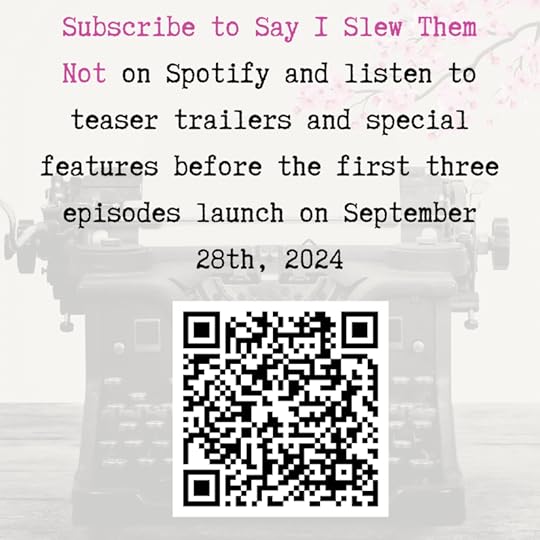 Like This? Try These:
Like This? Try These:Shar Khan
HS Kallinger



